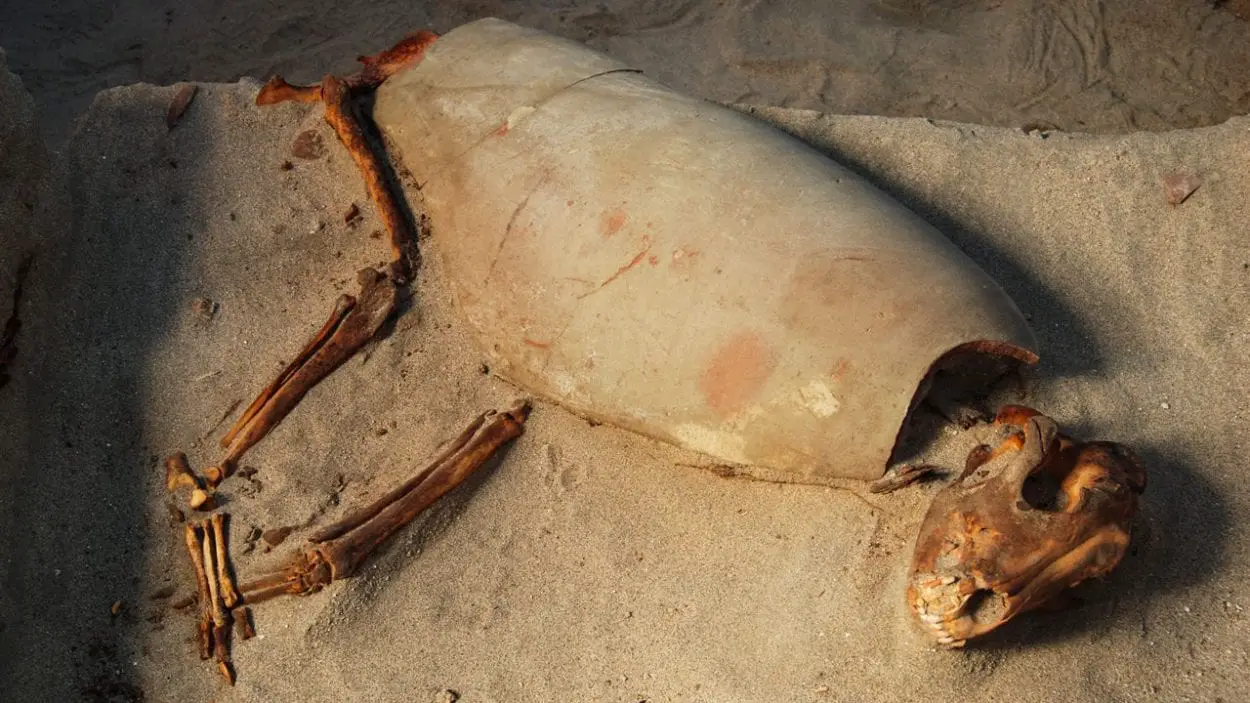Excavations of the early Roman port of Berenice in Egypt have unearthed the remains of nearly 600 cats and dogs from an ancient pet cemetery thought to be the earliest known yet discovered dating from 2000 years ago.
Berenice, also called Berenice Troglodytica, and Baranis, was founded in 275 BC by Ptolemy II Philadelphus (285–246 BC), who named it after his mother, Berenice I of Egypt. From the 1st century BC until the 2nd century AD, Berenice was one of the trans-shipping points of trade between India, Sri Lanka, Arabia, and Upper Egypt.
Evidence for the cemetery was first discovered by Archaeozoologist Marta Osypinska and her colleagues at the Polish Academy of Sciences back in 2011, who discovered remains beneath a Roman rubbish pile.
In 2017, her team announced the discovery of 100 animals (mainly cats), but the exact nature of the bone assemblages was unclear, thought possibly to simply be discarded rubbish at the time.
During the latest series of excavations, Osypinska and her colleagues uncovered the remains of 585 animals buried in pits, with many covered with textiles or pieces of ceramics forming a kind of sarcophagus.
A veterinarian studying the bone assemblages has determined that most animals appear to have died from injury or disease, with some showing evidence of fractured legs and breaks in the bones.
Of the 585 animal remains, more than 90% were cats (many with iron collars or necklaces made with glass and shells), with dogs making up 5%, and the rest being baboons and two species of macaques native to the Indian subcontinent.
Osypinska told ScienceMag: “We have individuals who have very limited mobility, such animals had to be fed to survive, sometimes with special foods in the case of the almost-toothless animals.”
This, along with the nature of burial, has led the team to suggest that they formed a large pet cemetery that functioned for about a hundred years, from the mid-first century to the mid-second century AD.
Header Image Credit : M. OSYPINSKA





